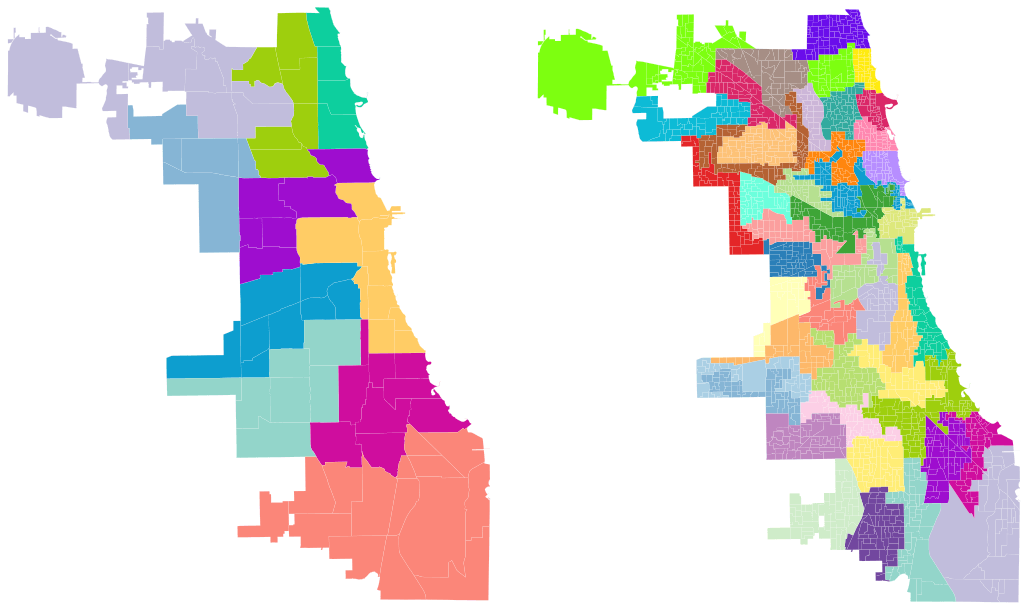Study of Reform Proposals for Chicago City Council

Many observers agree that the Chicago City Council ward system suffers from problems of gerrymandering, intense segregation, vestiges of machine politics, and inefficiency. In our latest report, we apply mathematical models to analyze Chicago’s current ward plan and compare several reform proposals to address its problems. Our findings strongly support a transition to multimember wards with ranked choice voting to secure and sustain fair representation.
Draw your own districts
To accompany this report, we have added Chicago to Districtr, our open-source web app for redistricting so that anyone can try their hand at drawing a districting plan and to explore the interplay between the structure of a districting system and the demographics of individual wards. Get started drawing districts here.
See the data and code
We have made all of the code and data used for this report available in a GitHub repository. This includes:
- Cleaned ranked-choice voting data from Minneapolis, Cambridge, and Oakland
- Shapefiles of Chicago’s precincts, wards, and community areas, joined with demographic and socioeconomic census data.
- Our full ensembles of districting plans for Chicago, in a Districtr-readable format
- A new Python package
rcvfor tabulating ranked-choice ballots. - Jupyter notebooks we used to generate ensembles, analyze and visualize data, and run the stochastic election model used in the report.